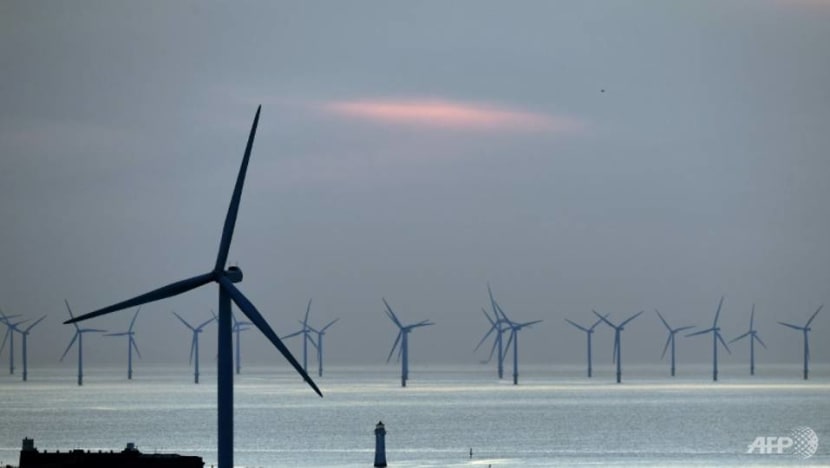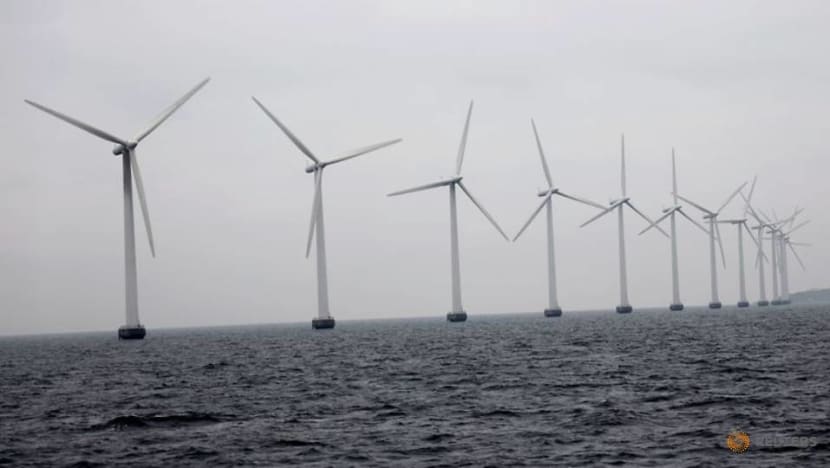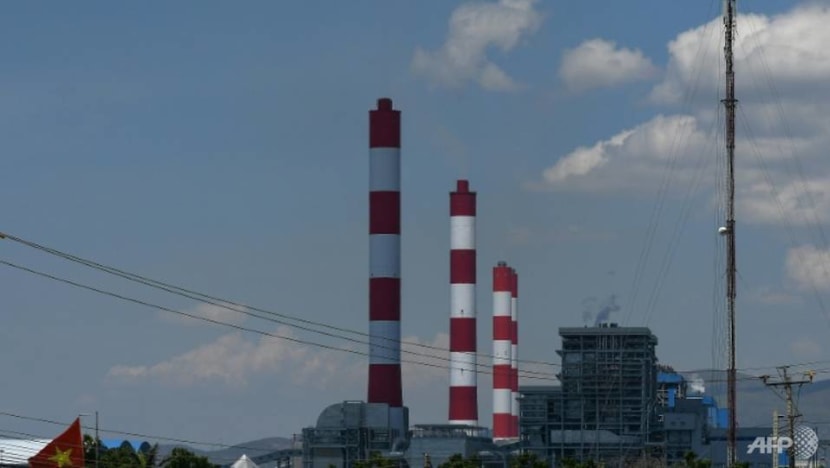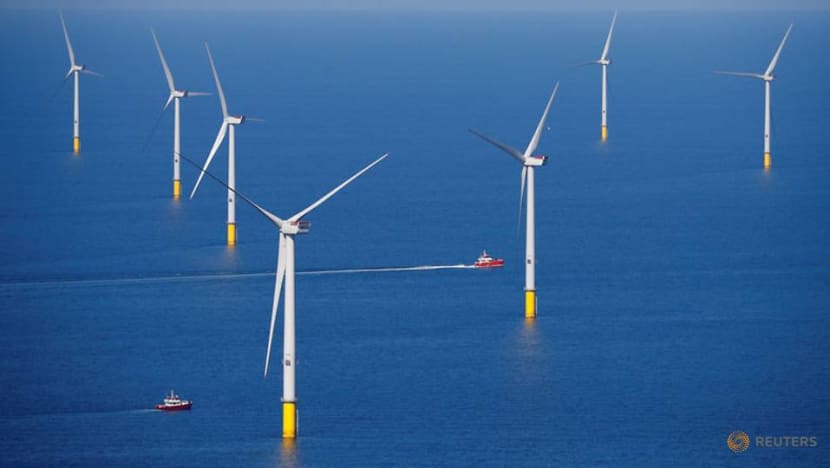Giant offshore wind turbines could help Vietnam tackle immense climate change challenges

Offshore wind currently provides just 0.3 percent of global power generation AFP/Paul ELLIS
BANGKOK: Vietnam could become a future global leader in offshore wind energy generation, after recent analysis showed the country has vast potential along its 3,000 kilometre coastline.
Vietnam’s current electricity generation capacity is approximately 54GW. The government has signalled an intent to more than double that figure - to up to 130GW - over the coming decade. Offshore wind technology could prove to be an enticing and viable way to make that leap.
Preliminary findings presented by the Danish Energy Agency (DEA) have found that offshore wind, if fully harnessed, could alone generate up to 160GW of power, based on background analysis and resource mapping, in cooperation with the Renewable Energy Authority of Vietnam.
“Vietnam is blessed with a very long coastline and good wind speeds. The technical potential for offshore wind in Vietnam is therefore huge and the technology could make a very significant contribution to decarbonisation of the Vietnamese electricity supply, given the right targets and policy framework,” said Erik Kjær, a DEA senior advisor.
While it is unlikely that so much power would ever be needed in a diversified national energy system, the enormous scale will give the Vietnamese government and investors reason to push ahead with the technology, according to Liming Qiao, the Asia Director of the Global Wind Energy Council.
“The sheer size can put Vietnam in a leadership position in the Southeast Asia region,” she said. “It is happening now and will take a few years for this to be fully scaled; currently they are still focusing on the near shore, and real offshore will come.”
READ: Greener and cleaner - Reimagining our cities in the wake of COVID-19

Based on a March report co-authored by renewable energy expert Minh Ha Duong, there is 14.7GW of wind energy capacity - including onshore and near shore - either operating or in the pipeline in Vietnam.
He predicts that 10GW to 12GW of offshore wind power could be online by 2030 in Vietnam, about a third of what has been installed around the world today.
“Vietnam starts behind Japan and Taiwan, but it has the potential to be in the top five in offshore wind capacity by 2030, Minh, the director of the Clean Energy and Sustainable Development Lab in Hanoi, told CNA in an interview.
LOWER COSTS, IMPROVING RELIABILITY FOR WIND ENERGY
The technology remains in its early adaptation stage, with installed capacity sitting at just 29GW, most of which is located in northern Europe.
In Denmark, the first offshore wind project was commissioned back in 1991, and it has taken decades for the technology to advance and the economics to become feasible.
But the price of building and operating massive turbines in the ocean is rapidly dropping. As more projects come online, economies of scale and the maturation of the industry are expected to help lower costs even further.
While there are questions about the impact of regional typhoons on offshore operations, reliability is also improving. Researchers have found that offshore wind is more stable than onshore, providing year-round reliability.
“Wind and other renewable energy is now the most promising technology in fulfilling the gaps of the Paris Agreement,” Qiao said. “The cost of renewable energy is dropping dramatically and this is the best time for renewable energy to play a bigger role in the market.”
It could help end Vietnam’s dependence on fossil fuels, which remains a major hurdle to it achieving its climate change targets.

“I think that new offshore wind would compete economically with new coal or gas within five years in Vietnam. Because a big part of economics is about finance and risk, and there is nothing more volatile than fossil fuel prices,” Minh said.
Coal power generation is still the most practical and affordable option for Vietnam currently, according to Fitch Solutions. The industry is still growing locally and contributing to what is said to be the country’s poor record on fighting climate change.
Its current climate commitments are rated as “critically insufficient” by Climate Action Tracker, an independent consortium that tracks government action. That is mostly due to continued domestic dominance of fossil fuels.
It is a situation exacerbated by short-term power shortages that need to be addressed. Already, a surging national economy means power supply will be outstripped by demand by next year, as new construction of power plants struggles to keep pace.
READ: Extreme flood risk - New report outlines potentially disastrous scenario for Ho Chi Minh City
VIETNAM AT "GOOD STARTING POINT" FOR RENEWABLES PUSH
The central government, however, has made clear its intention to take a greener future path.
It released a document in February, highlighting an intended shift towards renewables up to a proportion of 20 per cent by 2030.
It is already exceeding the wind projects needed to meet 2025 targets. But there are calls for greater ambition.
Major bottlenecks remain in Vietnam’s national electricity grid, which is already under strain and inflexible. It makes it harder to stimulate growth in renewables, like solar and wind, despite their obvious potential.
“Developers will continue to struggle with Vietnam’s underdeveloped power grid capacity. Strengthening the national electricity grid and defining priorities which give appropriate value to wind energy’s value to the system ... will be vital for the country to accelerate renewables deployment,” Qiao said.

Vietnam has been a rare success story in curtailing the impact of the COVID-19 crisis, and still has a modified growth target of 4.5 per cent to 5.4 per cent this year, according to Prime Minister Nguyen Xuan Phuc.
It means that new investments in renewable energy infrastructure, which is projected to be hampered in many parts of the world as economies fall into recession, could remain viable in the near term in Vietnam, if national infrastructure can handle the new inputs.
DEA notes that a fully fledged offshore power industry will only thrive with “robust long-term policies and targets”, while specialised infrastructure like ports, vessels and a trained workforce would be required.
“Vietnam already has a very good starting point for this,” Kjær said. “It is a future proof solution.”
The government is currently finalising its latest national power development plan, which is set to direct the role of renewables over the coming decades, potentially providing more clarity for investors.












